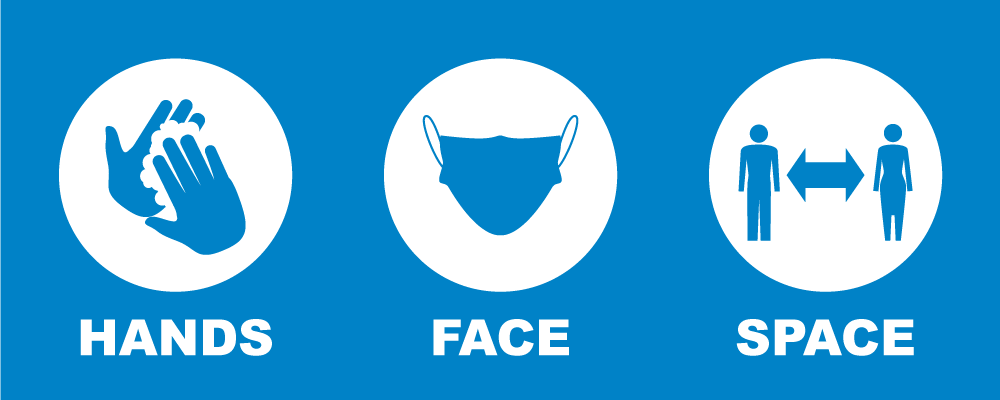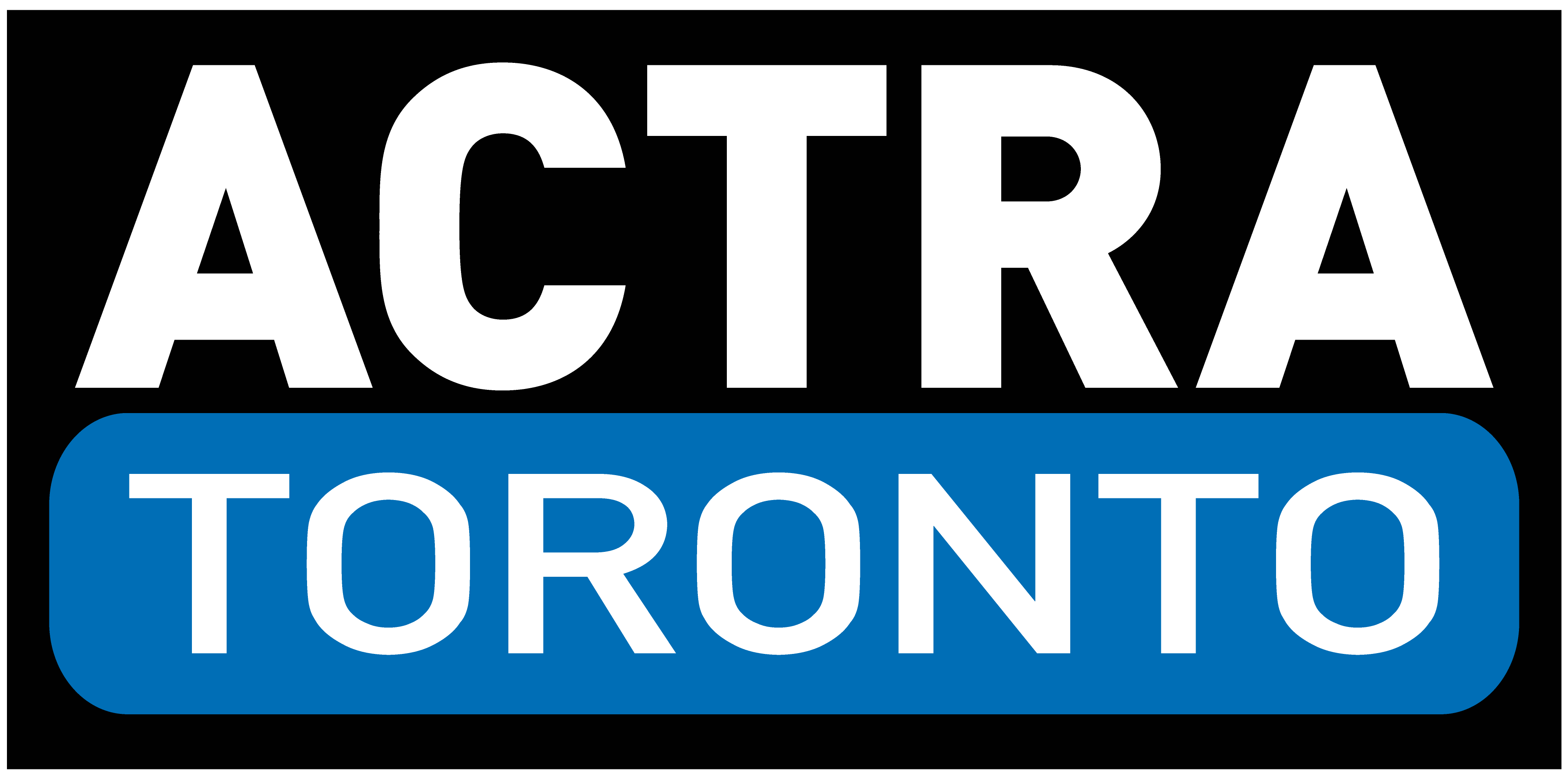Consult the ACTRA Toronto website for the most up to date information on COVID-19. Performers are also encouraged to review the Film and Television Industry Health and Safety During COVID-19 Guideline prepared by the Section 21 Film and Television Health and Safety Advisory Committee of the Ontario Ministry of Labour, Training and Skills Development. The guideline was developed together with the other guilds, unions, film, television and commercial producers and then approved and published by the Ministry. As part of the Ministry’s approval process, the guideline was reviewed by medical, legal and public health officials. ACTRA Toronto will require productions to adhere to the guideline as well as develop health and safety policies of their own.
Employers must take every reasonable precaution to protect workers from workplace hazards. Productions are required to send a copy of their COVID-19 health and safety policy to ACTRA Toronto in advance of Performers providing services.
Public health advises that physical distancing is one of the primary methods of protecting workers. As a result, Performers can expect measures to minimize contact such as remote auditions and casting, virtual meetings, fewer people on set, floor markings and designated spaces, staggered schedules and breaks, and self-drives. Performers may be asked to apply their own makeup, dress and mic themselves, move their own props, and dispose of their garbage. When physical distancing is not possible, productions must use barriers and Personal Protective Equipment (PPEs) like masks and gloves.
Proper handwashing or sanitizing, and the cleaning and disinfection of materials, surfaces and equipment are key prevention strategies. These measures can include increase handwashing and sanitizing stations, frequent and intensive cleaning procedures, ventilation of studios, vehicles and other confined spaces, use of disposable brushes and applicators, individually wrapped foods, and protocols that will reduce contact on surfaces such documents, costumes, props, sets, mics and equipment.
If you have been diagnosed with a confirmed positive case of COVID-19, you must follow the guidance provided by your local health unit. Once they clear you to return to work, you may need to request a letter/email from your doctor stating that you are able to resume work and that asymptomatic testing may not be required for up to 90 days due to persistent shedding of the viral load. Per the Ontario Ministry of Health’s COVID-19 Quick Reference Public Health Guidance on Testing and Clearance, an asymptomatic individual that previously had laboratory-confirmed COVID-19 AND was cleared, should generally not be re-tested for asymptomatic surveillance purposes due to persistent shedding. This can last up to 90 days.
Productions are required to have a COVID-19 health and safety policy and provide training to workers. ACTRA Toronto will also outreach to members by hosting town halls, updating our website, and developing other resource materials. While ACTRA Toronto can provide information generally about health and safety on returning to work, it remains the responsibility of employers to train Performers on the protocols in the specific workplace.
Productions are required to obtain workers compensation insurance coverage or its equivalent and provide proof on request. Performers should not be asked to waive their rights to being insured. ACTRA Toronto is working with agents and monitoring the situation. If you are asked to sign a waiver or mistakenly signed one, notify ACTRA and provide a copy of the document. If you are or suspect you are working without insurance, contact ACTRA immediately.
Public health is directing that screening should take place to assess the health and wellness of individuals before entry into the workplace. It is anticipated that workers will be asked to answer a questionnaire. Temperature testing with a contactless thermometer is also possible in addition to the questionnaire. Other forms of testing are currently not available in Ontario. ACTRA Toronto is monitoring the issue considering the requirements set out by public health and government authorities, with a view to protecting member safety, privacy, human rights and other relevant considerations.
Yes. An employer in the province of Ontario can require ongoing testing as a condition of employment.
Wait times vary per public health unit.
As the employer is booking the test times, they should be allowing adequate time for results to be returned. If the results are not available by the time work is scheduled to begin, the Producer will need to reschedule or cancel the booking as per the applicable collective agreement.
Yes. Producers who require performers to isolate must pay the performer as per the applicable collective agreement, e.g. IPA Article 1802.
Federal privacy legislation prevents a Production from sharing personal health records and the results of COVID tests. However, individuals can choose to share their COVID results where a Production permits. ACTRA Toronto is working with Production companies to identify how performers can share their results to help minimize the need for multiple testing in a week when performers are moving from set to set. Accepting results from other productions will be up to the discretion of the Producer.
Again, federal privacy legislation prevents multiple productions from accessing a central database. The decision to share personal health records rests with the individual performer.
Yes. Mandatory tests require payment. For example, the minimum fee under the IPA is two hours or time spent getting tested, whichever is greater. Performers are encouraged to negotiate above these minimum terms.
Some performers are being asked to travel to Brampton. No travel time is owed inside the 40km zone.
ACTRA’s agreements and Ontario’s Human Rights Code protects Performers from discrimination and harassment. ACTRA Toronto has and will continue to communicate to Productions that decisions concerning work opportunities and fitness to work must not be based on racism, ageism, ableism or other stereotypes. We will continue to support Productions in casting Performers in roles that reflect the composition of Canadian society.
Productions requiring Performers to self-isolate are required to comply with all the fees and terms in ACTRA’s agreement. Productions cannot require Performers to be compensated at rates, terms, or subject to working conditions that are less favourable. If you are asked to self-quarantine without pay in advance of your engagement, restricted from taking other work, or sent home due to a suspected illness or COVID-19 exposure, speak with your agent or contact ACTRA Toronto.
Most regions in Ontario are still operating under some restrictions given the numbers of COVID cases and the new variant. When you are not working, the best advice is to stay home, reducing your exposure to anyone who may have COVID. The protocols in place with productions are rigorous and to-date have prevented any spread of COVID on sets. We must all continue to be vigilant and follow the protocols carefully: wear a mask and PPE, maintain physical distance and wash or sanitize hands frequently.
The Production’s COVID-19 health and safety policy will have a procedure for what happens when a worker tests positive for COVID-19. This is also addressed in the Film and Television Industry Health and Safety During COVID-19 Guideline. Under ACTRA’s agreement, Productions are required to notify ACTRA as soon as possible of any accident, incident or injury concerning a Performer and file an incident report within one (1) business day. This includes when a Performer becomes ill or is at risk of COVID-19 exposure from the workplace.
Production and individuals affected will take their lead from public health officials in terms of contact tracing. If an individual tests positive that you have been in close contact with, you may get an alert on your phone if you and the individual are using the COVID-19 app or you may be contacted by public health. The definition of close contact varies with each public health division so again, best to check the Ontario government and municipal COVID pages for more information.
If a performer is booked on Show A and Show A requires them to isolate and they are missing a day of work on Show A, they would receive one sick day. If they missed work on Show B for potential exposure on Show A, no payment would be owed.
Best advice is for both of you to consult your doctor. However, the safety protocols on productions to-date have prevented any spread of COVID-19 on sets. If someone does test positive on a set you work on and you are advised to isolate by public health, you should wear a mask, exercise physical distance and wash hands frequently when at home.
Immediate counselling and support are available 24/7 at HAVEN Helpline 1-855-201-7823. None of us can anticipate how we might feel while living and attempting to work during a global pandemic. Anxiety over health concerns is real. If you feel you may be unable to fulfil your engagement, speak to your agent or contact ACTRA Toronto.
Productions are responsible for ensuring a safe work environment. Safety concerns should first be reported to the Production:
- If your concerns are related to COVID-19, there will be a designated person responsible for enforcing the production’s COVID-19 health and safety policy. Check the call sheet for their contact information.
- If your issue concerns an intimate scene, assistance may be available from the intimacy coordinator if one has been engaged by the production.
- If this is an emergency, you have the right to refuse unsafe work. The Occupational Health and Safety Act gives workers the right to refuse work that they believe is unsafe to themselves or others. Workers who believe they are endangered by workplace violence may also refuse work. The specific procedure to follow in order to establish a work refusal may be found here.
You can also contact ACTRA at the following:
- During office hours – 416-928-2278 or (toll-free) 1-877-913-2278
- 24/7 at HAVEN Helpline – 1-855-201-7823
- Non-emergency afterhours – afterhours@actratoronto.com
You are required by law to adhere to the measures adopted by government and public health authorities. The Occupational Health and Safety Act requires workers to work in compliance with the Act, and not conduct themselves in a manner that could endanger themselves or others. Under ACTRA’s agreements, Constitution and By-laws, you are required to maintain professional conduct which includes not engaging in behaviours that endanger other members, jeopardizes the Production or brings the profession into disrepute. If you are concerned that a specific measure is contrary to ACTRA’s agreements, your rights under the Human Rights Code or at law, raise your concerns with production, your agent or ACTRA Toronto.
During the global pandemic, there have been reports of increased harassment and violence against workers, especially when they are attempting to enforce safety measures in their workplace. These are stressful circumstances for everyone. Please be kind, patient and respectful of others.
COVID-19 and Ontario’s Human Rights Code – Questions and Answers Updated January 12, 2021 - The OHRC has developed a series of questions and answers for understanding your human rights and obligations during the COVID-19 pandemic. These questions and answers cover the rights and responsibilities of employers and employees, tenants and landlords, as well as residential institutions. [Disclaimer: The answers to the questions posed do not constitute legal advice. The OHRC continues to monitor the evolving situation and will update or add to these questions and answers on an ongoing basis as needed.]


